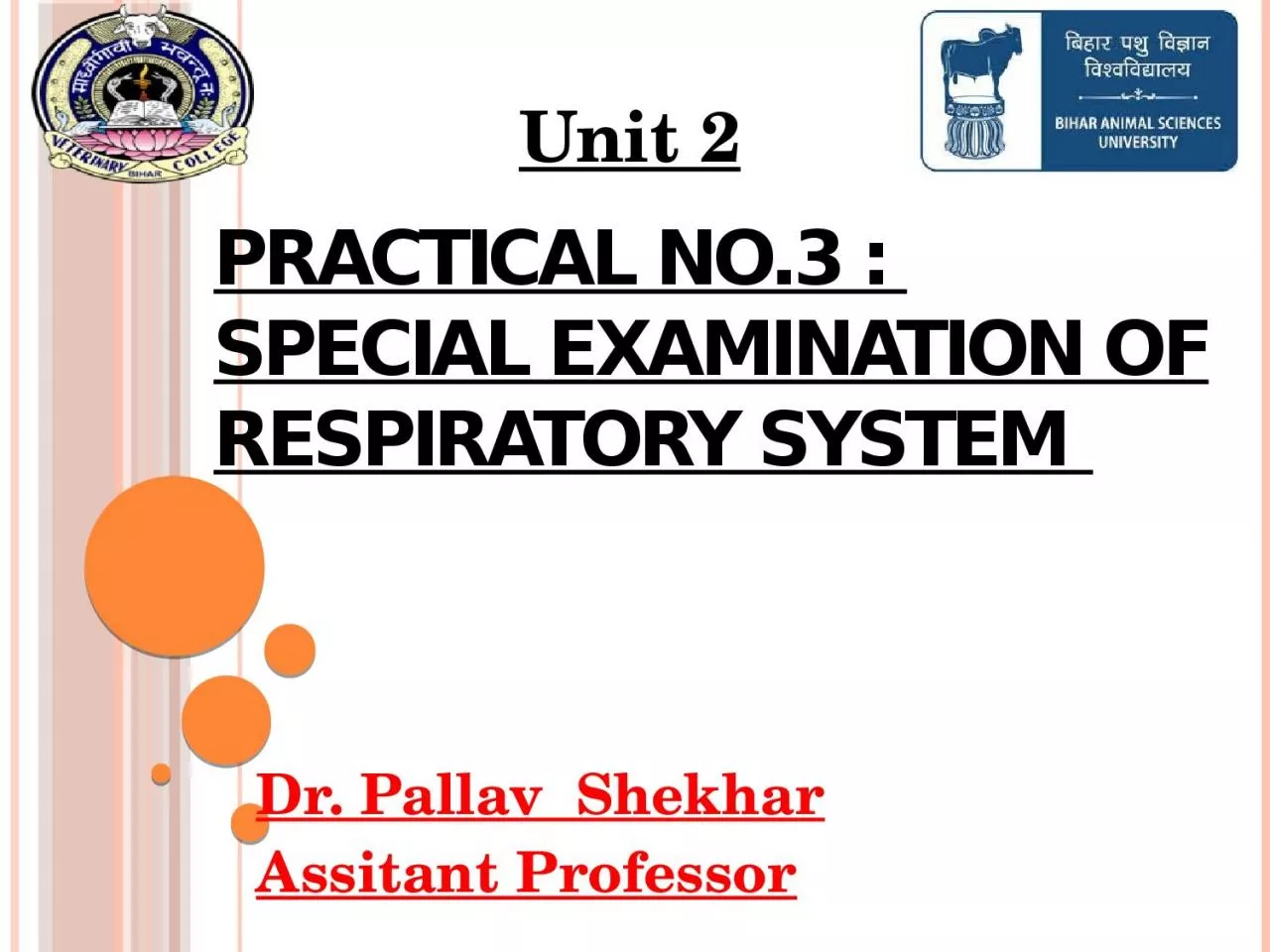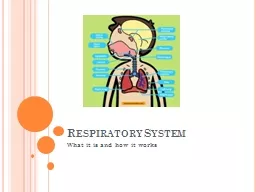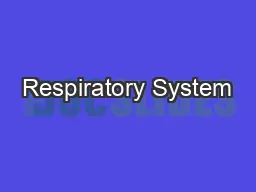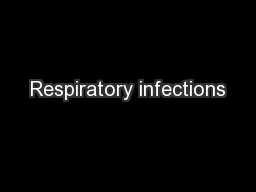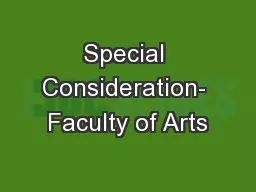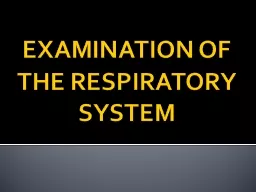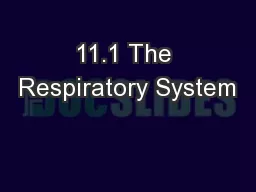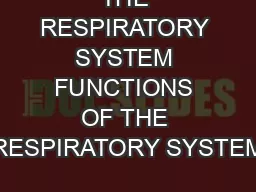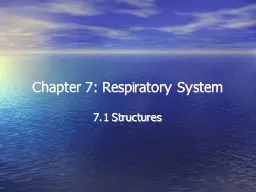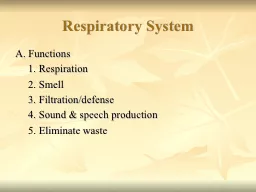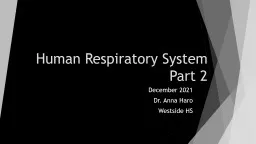PPT-Practical No.3 : Special examination of Respiratory system
Author : everly | Published Date : 2022-06-18
Dr Pallav Shekhar Assitant Professor Unit 2 Objectives To study the method of recording of respiration rate in animals Procedure Examination of respiration
Presentation Embed Code
Download Presentation
Download Presentation The PPT/PDF document "Practical No.3 : Special examination of..." is the property of its rightful owner. Permission is granted to download and print the materials on this website for personal, non-commercial use only, and to display it on your personal computer provided you do not modify the materials and that you retain all copyright notices contained in the materials. By downloading content from our website, you accept the terms of this agreement.
Practical No.3 : Special examination of Respiratory system: Transcript
Download Rules Of Document
"Practical No.3 : Special examination of Respiratory system"The content belongs to its owner. You may download and print it for personal use, without modification, and keep all copyright notices. By downloading, you agree to these terms.
Related Documents

